* There is strength in stories *
This one is from the archives.
On every wilderness first aid course that I teach I remember this incident, and narrate it sometimes as a ‘case study’.
This incident is also noteworthy because I am sure it has influenced me significantly in the way I subsequently approached my life in the outdoors.
The year was 1988, and we were attempting Mt. Kangchenjunga, the world’s third highest and India’s highest mountain at 8,586 m. / 28,208 ft. Our expedition, “Kangchenjunga 88”, was the first civilians-organised attempt on an eight thousander from India. I was twenty five. Am mentioning that because in Marathi (my mother tongue) we have a term that describes that age: gadde-panchvishi! It literally translates to ‘ass-like mid-twenties’. But I don’t think it refers to offensive behaviour. Instead it refers to, almost endearingly, youth’s relentless energy and obstinacy, tendency to be impulsive and be blind to its consequences, to be driven by dreams, to believe in a cause, to take on huge challenges… in short, where the sheer energy of the young make them fidget in life! But I digress…
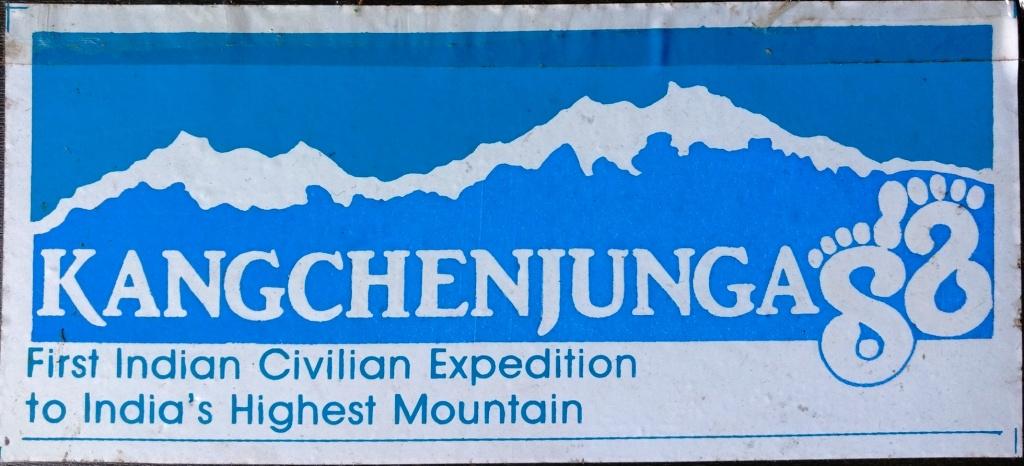
I was a member of the four-person Advance Party, in charge of walking with our expedition’s load being ferried to the Base Camp (B.C.) situated at 5,500 m. / 18,000 ft. This approach march from the road-head to the B.C. was a 16-day walk at the minimum, through forests, along the banks of torrential rivers, over high passes and eventually through Yalung glacier. We took over a month to do this walk because of the logistical complications of a couple of relay stations and lesser number of porters for the glacier bit.
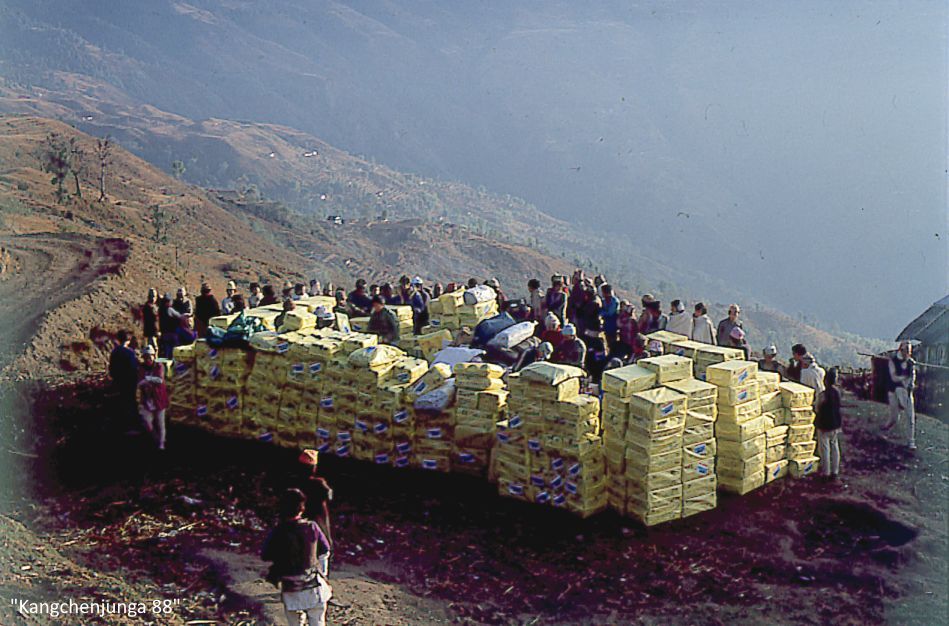
So there I was, stationed at Ramche (4,610 m. / 15,120 ft.), our camp just before the trail dipped down into Yalung glacier. Our job was to keep track of all incoming load and take care of it before sending it off towards B.C. Porters from the nearby Sherpa village of Ghunsa (3,475 m. / 13,205 ft.) were doing this formidable task. Yalung glacier was a weird world – a serpentine crawling river of complex debris in the form of scree, rocks, boulders, old ice and glacial pools. It inched forward, scouring the sides of mountains, creating towering cliffs that ‘bled’ rock and soil everywhere. This was a two-day march filled with countless hazards. The trail was but a series of tell-tale marks where passing boots had left scuff marks, and these too tended to disappear when the debris shifted. Ramche to B.C. took two days, with a single camp pitched on the glacier for the overnight halt – ‘Kuna Camp’, the local pronunciation of ‘Corner Camp’ because the glacier curved at that spot.
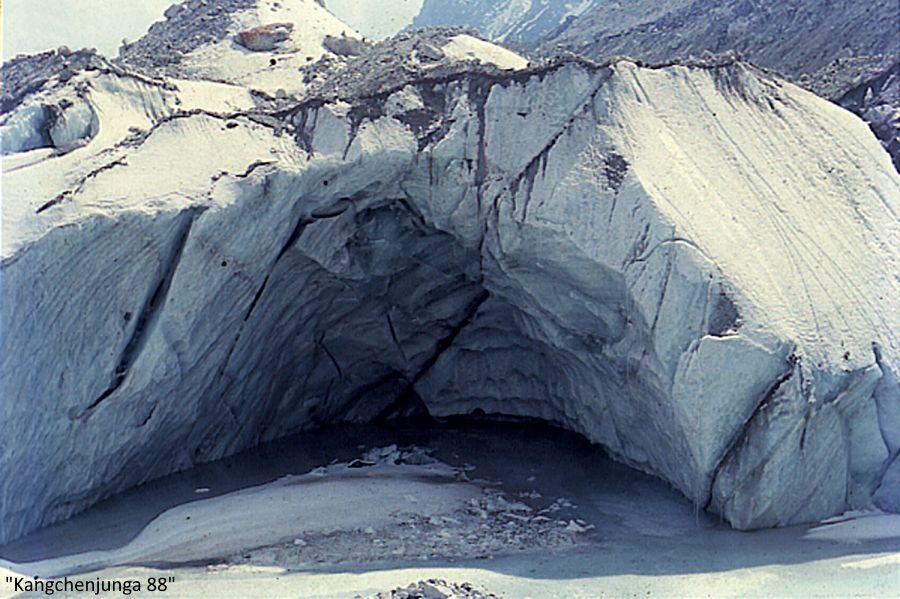
One day, as we were relaxing after dinner, two porters arrived at Ramche from Kuna Camp. The time was 8.00 p.m. and it turned out that there was an emergency. One porter, while walking in a particularly notorious patch of rock fall area, had been injured when a plate-sized rock fell from above to land in front of him only to bounce off and hit him in the face. He had been carried comatose to Kuna Camp. The two had come to us to see if one of us could go up to administer first aid. While we sent two members of the cooking team to the lower camp at Cheram where our expedition doctor had arrived, I decided to go up to Kuna Camp. That walk up the glacier in the dark could have been eerie and dangerous but actually I was enthralled! Gadde-panchvishi in full swing, I grabbed the chance of walking through this terrain in the dark, something that would not have even occurred to city folks! It took all my effort to try to keep up with the two Sherpas while taking care to step carefully over see-sawing boulders, slick verglass and across frozen glacial pools. I had to keep reminding myself that the two gents hailed from one of the highest villages in the world and were already acclimatised to higher altitudes due to their load ferries, but I was suitably humbled by the fact that the two talked almost non-stop throughout the walk while I huffed and puffed behind them. Most of the times they simply ran ahead and waited on the next rise to make sure I knew where to go while I caught up with them, only to see them scoot off again. But we made Kuna Camp in two hours flat, reaching it at 11.00 p.m.!

The sight that greeted me was otherworldly. Starlight made the tents look like they were a part of the glacier. They were pitched on a big jumble of boulders in the middle of the glacier so as to be away from the dangerous cliffs on both ‘banks’. No tent was on level ground. I entered the tent where the patient lay. He was now responsive. I saw that the bone or cartilage (I could not be certain what it was) of his nose was exposed, and his face was caked with blood. I remember the strange feeling of my legs going rubbery as psychogenic shock at the sight of his condition set in. And my immediate thought was how the heck am I going to take care of this? As I dug out my first aid kit I had to consciously get a control over my own feelings and be matter-of-fact. With the patient’s brother helping me talk with the patient, I cleaned his face of most of the dried blood and finally saw where the actual wound was, which had fortunately stopped bleeding a while back. I checked him and found that there were no other injuries. Just as I was going to apply an antiseptic ointment to his wound, I noticed a cautionary note on the tube saying ‘not to be applied near eyes’. So back it went into my kit as I explained to the others why I am not using the ‘medicine’. When I grabbed a gauze and roller bandage I realised that any pressure on the wound may push pieces of broken bone into tissue underneath. So finally I settled for a wad of cotton held in place by an elastic bandage applied lightly. Now I had to instruct the brother to oversee the patient through the night. That is when I remembered something that I had read in my college days – the book ‘Final Diagnosis’ by Arthur Hailey.

The book cites the case of a four year old boy with nose injury, a victim of a car accident. The boy was brought dead to the hospital. Autopsy revealed that the boy had died not because of head injury but because of having aspirated blood from his nose injury (i.e., the blood had entered his airway and lungs). All that was needed to have kept him alive was for someone to have turned the boy on to his side, which would have kept his airway open. (The fact that a worsening head injury could also have had serious consequences later is beside the point). In anticipation of the injured porter once again sliding into unresponsiveness I had the patient propped up on his side, explained the funda maintaining airway to the guys in the patient’s tent and made them promise that they would take turns to monitor the patient through the night, and only then slid into my sleeping bag.
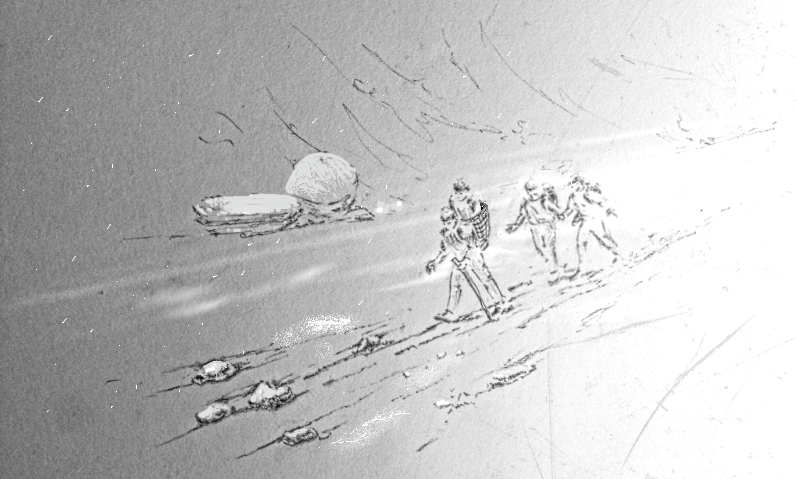
The next day, I ‘ran back’ to Ramche accompanied by one Sherpa. Later, the patient arrived sitting in a ‘dhoka’, a woven basket of bamboo strips, carried by his brother. There was light snow falling. The patient was very much conscious, and was calmly looking around as the landscape gradually turned white with fresh snow. As I said, very, very humbling. Our doc arrived shortly and tended to the injured man. He got evacuated and recovered completely with more medical care in a hospital.
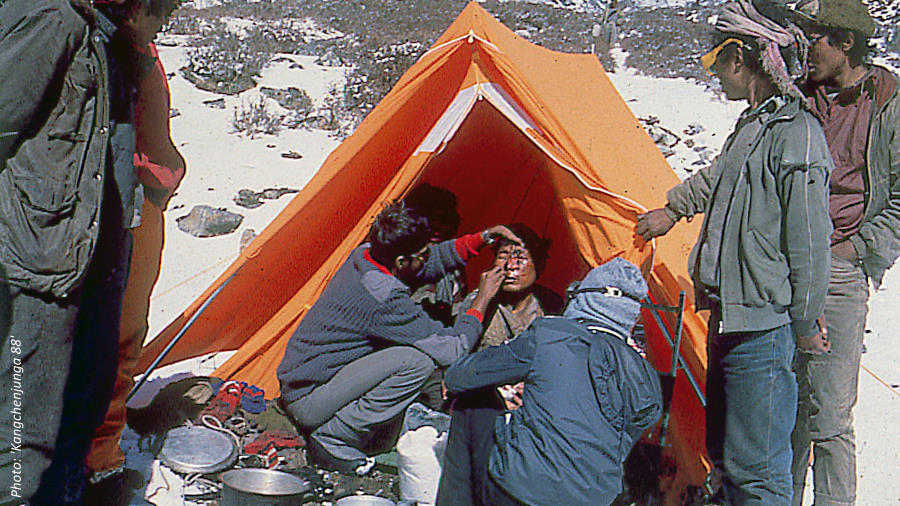
That has been one of my most intense defining experiences. I truly believe that the detail of maintaining an open airway played a crucial role in my patient care. Somewhere, I think, the value of being adept at first aid sunk in that day. And when I was introduced to the world of ‘wilderness’ first aid, I was blown away by its content, its approach and its thoroughness in looking at emergencies occurring in remote conditions. And when the opportunity came to do an instructor course in wilderness first aid (with Aerie Backcountry Medicine, U.S.A. which has associated with Hanifl Centre, India), I jumped at it.
I will end this with an interesting observation: the fact that, when a situation in wilderness arose, my recall of a detail from a novel was stronger than from what I had learnt on a first aid course. Goes to show the power of storytelling, I guess.
Excerpt from ‘The Final Diagnosis’ by Arthur Hailey:
An hour or two earlier the child had been struck by an automobile outside his own home. He had been brought to the hospital by ambulance but was dead on arrival. Notified, the coroner had ordered an autopsy. McNeil told Pearson what they had discovered.
The old man said, “You mean that’s all?” He seemed incredulous.
McNeil answered, “That’s all that killed him. Nothing else.”
Pearson moved toward the body, then stopped. He knew McNeil well enough to be aware that the resident would have made no mistake. He said, “Then they must have just stood there . . . and watched.”
Seddons put in, “Most likely nobody knew what was happening.”
Pearson nodded slowly.
[…]
“All right; I’ll go up and tell them.”
The three occupants of the hospital anteroom looked up as Pearson entered. One was a uniformed patrolman of the city police, and near him was a tall man whose eyes were red-rimmed.
[…]
Pearson introduced himself. The patrolman said, “I’m Stevens, sir. Fifth Precinct.” He produced a notebook and pencil.
Pearson asked him, “Were you at the scene of the accident?”
“I arrived just after it happened.” He indicated the tall man. “This is the father of the boy. The other gentleman was the driver of the car.”
The mousy man looked up. Appealing to Pearson, he said, “He ran straight out—straight out from the side of the house. I’m not a careless driver. I’ve got kids of my own. I wasn’t going fast. I was almost stopped when it happened.”
[…]
Pearson said quietly, “Just a moment, please.” There was silence, the others watching him. He motioned to the policeman’s notebook. “There’ll be a full report for the coroner, but I can tell you the preliminary findings now.” He paused. “The autopsy has shown it was not the car that killed the boy.”
The patrolman looked puzzled. The father said, “But I was there! I tell you . . .”
“I wish there were some other way to tell you this,” Pearson said, “but I’m afraid there isn’t.” He addressed the father. “The blow your boy received knocked him to the road, and there was a mild concussion which rendered him unconscious. He also sustained a small fracture of the nose—quite minor, but unfortunately it caused his nose to bleed profusely.” Pearson turned to the patrolman. “The boy was left lying on his back, I believe—where he fell.”
The officer said, “Yes, sir, that’s right. We didn’t want to move him until the ambulance came.”
“And how long was that?”
“I’d say about ten minutes.”
Pearson nodded slowly. It was more than enough time; five minutes would have been sufficient. He said, “I’m afraid that that was the cause of death. The blood from the nosebleed ran back into the boy’s throat. He was unable to breathe and he aspirated blood into the lungs. He died of asphyxiation.”
The father’s face revealed horror, incredulity. He said, “You mean . . . if we’d only turned him over . . .”
Pearson raised his hands expressively. “I meant what I said—I wish there were some other way to tell you this. But I can only report the truth: the original injuries to your boy were minor.”
The patrolman said, “Then the blow from the car . . . ?”
“One can’t be sure, of course, but my own opinion is that it was glancing and comparatively light.”
– End of excerpt –

omg.. what an account, shantanu.
I was holding my breath..
God lies in the detail. truely.
Yeah, attention to detail… so crucial, especially in critical conditions.. Thanks, Alka.
Very well written.
I love your story, Shantanu!
My response is rather late in the day… but thanks for writing in Dave! (There was a technical glitch in the site where my responses never got uploaded or something like that…)